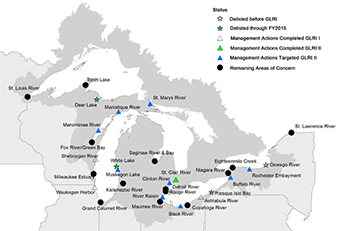Continuing on the theme of changes in the weather due to a warmer planet, this article points out how climate change is affecting people in ways that are not obviously clear. Take a guess what kills more people worldwide than alcohol use, kidney failure or too much salt. Smog.
I know that quite a number of you reading this have asthma as does my wife. You know how air quality not only effects your health but also how you live your life. On bad air days you try not to go out of your home for fear of an asthma attack. For us, we refuse to go to cities around the world that are known for horrible pollution and smog.
Now it appears that how long the smog hovers over urban areas is being exacerbated by climate change.
“The new study reveals how even the more mundane aspects of weather are being affected by man-made damage in ways likely to become—if they haven’t already—damaging to people and property.”
“pollution is lingering longer over cities and summer storms are becoming more powerful.”
“While climate change has intensified hurricanes and made seas rise, the circulation of these huge weather systems has been weakening. The result is cities swathed for days in pollution and whole regions more vulnerable to sudden, torrential storms.”
“The amount of energy available to thunderstorms is “increasing at a pretty significant rate,” or 13 percent,”
Climate Changed
A Summer of Storms and Smog Is Coming
Climate change has made urban pollution more dangerous and thunderstorms more destructive.
February 19, 2019
By Eric Roston
Air pollution is the sixth-biggest killer worldwide—more than alcohol use, kidney failure or too much salt. The cause, as we all know, is the burning of fossil fuels, which generates soot and other airborne particles that hang in the atmosphere.
In a new example of the vicious cycles spun up by climate change, research from the Massachusetts Institute of Technology suggests for the first time that pollution is lingering longer over cities and summer storms are becoming more powerful.
When it comes to the global warming crisis, rising seas, catastrophic flooding, devastating heat waves and unprecedented hurricanes get all the press. The new study reveals how even the more mundane aspects of weather are being affected by man-made damage in ways likely to become—if they haven’t already—damaging to people and property.
“You can connect observations that people are making on short time scales about weather phenomena to changes in the mean state of the climate,” said lead author Charles Gertler, a graduate student in MIT’s Department of Earth, Atmospheric and Planetary Sciences. “In plainer speech, it’s climate change and its fingerprint on weather events.”
The problem has to do with how the atmosphere’s changing heat structure, which is directly related to global warming, drives massive weather systems in regions where most people live. High in the atmosphere, these “extratropical cyclones” are powered by the mix of warm and cool air, and are the force behind blizzards, nor’easters and everyday thunderstorms. In cities, their winds typically blow away air pollution after a few smog-filled summer days. In the South, they keep powerful storms moving along. But that’s been changing.

While climate change has intensified hurricanes and made seas rise, the circulation of these huge weather systems has been weakening. The result is cities swathed for days in pollution and whole regions more vulnerable to sudden, torrential storms.
“Summertime weather isn’t ventilating American cities at the rate that it did in the past,” Gertler said.
Extratropical cyclones live off the temperature difference between southern and northern latitudes. As the Arctic warms, which it’s doing twice as fast as the global average, that difference is shrinking, and gradually restructuring weather in the hemisphere.
The study, published this week in the peer-reviewed journal Proceedings of the National Academy of Sciences, also states that these weaker extratropical cyclones may be contributing to longer heat waves, too. The study is based on temperature and precipitation data going back to 1979, the beginning of satellite monitoring.
The energy available to these systems has declined 6 percent during the hot months of June, July and August, which is a rate “near the extreme end of what different climate models simulate for recent decades,” the authors write.



